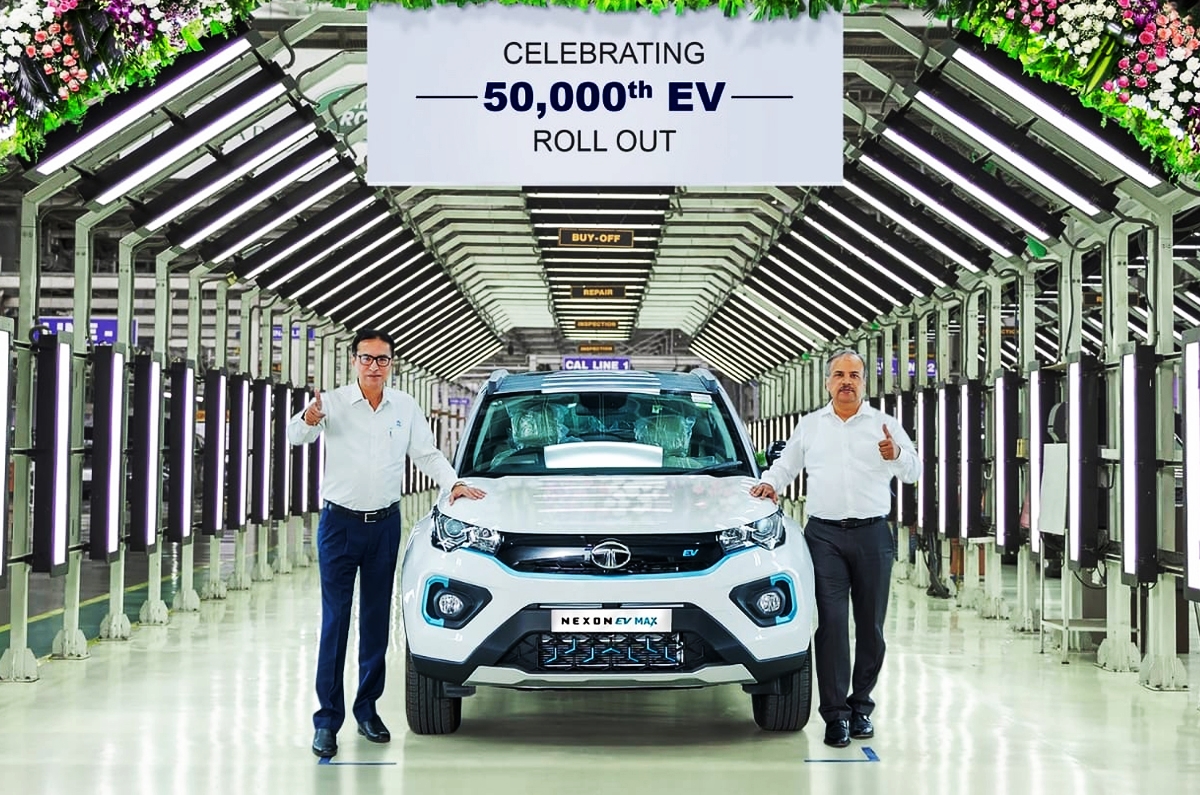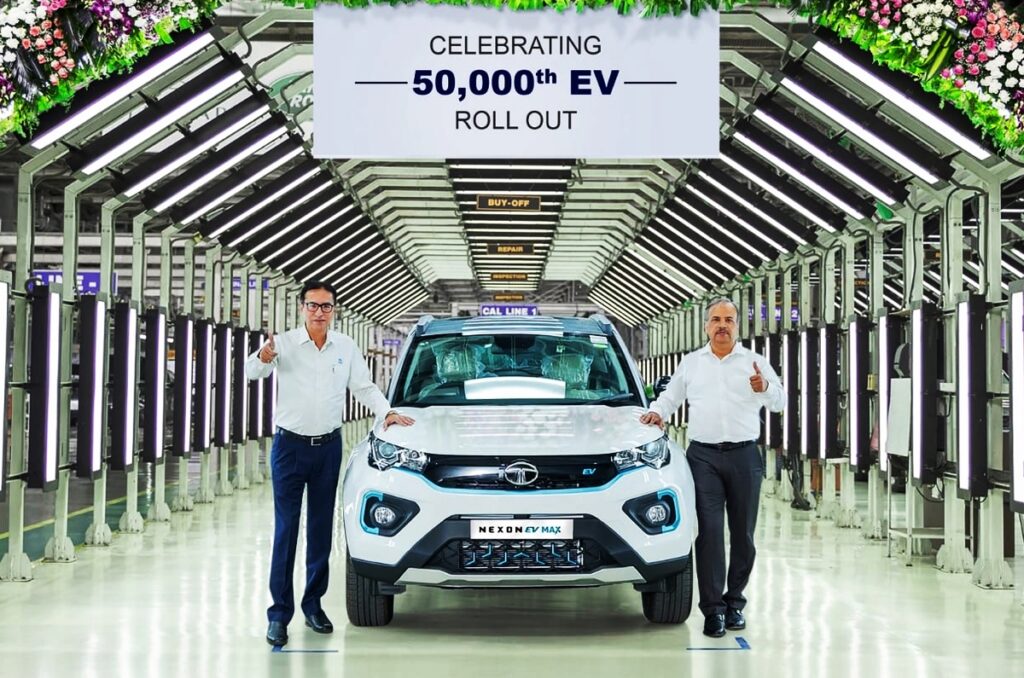[ad_1]

The Nexon EV has contributed majorly to this production milestone; fleet-only Xpres-T, Tigor EV and Tiago EV also help the numbers.
Tata Motors‘ electric vehicle range has achieved a 50,000-production milestone in India. The Nexon EV Max was the 50,000th electric vehicle to be rolled off the production line at its plant in Ranjangaon near Pune. The company currently has four EVs up its sleeve – the Nexon EV, Tigor EV, Tiago EV and the fleet-only Xpres-T EV.
- Tiago EV is currently the most affordable EV in the country
- 50,000th EV was a Nexon EV Max finished in Glacier White
- Tata Motors plans to have 8 EVs in India by 2025
Tata EV sales breakup
Electric vehicle adoption has seen an uptick in the recent past, but that’s no surprise given the ever-rising prices of conventional fuels. Tata Motors, operating at the affordable end of the spectrum, has been there to take advantage of the situation and currently has an unprecedented lead in the EV space.
Just in the first half of FY2023 (April-September 2022), the company sold 15,518 units of all its electric vehicles combined, giving it an overwhelming 85.53 percent market share. This makes for a monthly average of 2,586 units. The company had sold a total of 19,105 units in FY2022 – its first-half FY2023 tally is already 81 percent of that.
Apart from having an early lead, Tata’s success in the EV space can also be attributed to the lack of rivals at this price point. Currently, Tata is the only automaker whose EVs are all priced under Rs 20 lakh. The next closest rival – the MG ZS EV – is priced from Rs 22.58 lakh onwards (ex-showroom).
Tata Motors: EV timeline
The other reason for the company’s success can be attributed to its wide and diverse range of products. The carmaker’s first EV was the Tigor EV launched in June 2019, but was only made available to fleet operators at the time. And while the electric compact sedan was later also made available to private buyers, it was the Nexon EV launched in January 2020 that really took off Tata’s EV gameplan. With the SUV form factor and being the first EV with a usable driving range, the Nexon EV was quick to find early adopters.
The Tigor EV – as well as the fleet-only Xpres-T – were also subsequently updated in 2021 with a larger battery, more range and more power, therefore, giving it more desirability. Earlier in May this year, Tata also updated the Nexon EV with a longer-range and better-equipped Max variant. Although considerably pricier than the standard Nexon EV, the Max variant increased the usability of the vehicle that could now be realistically used for outstation trips.
More recently, Tata launched the Tiago EV at Rs 8.49 lakh, making it the most affordable EV currently on sale in India. With deliveries slated to begin from January 2023, the Tiago EV is the last of Tata’s first phase of electrified models, which were quick conversions of existing ICE platforms to electric vehicles in a cost-effective manner. Tata, therefore, currently has an electric offering in each of the entry-level hatchback, compact sedan and compact SUV segments.
Upcoming Tata EVs
Going ahead, Tata Motors will be introducing more electric vehicles based on its Gen-2 architecture that’ll see the company using existing ICE platforms, but extensively modifying them to suit electric vehicles, for instance, adapting them to have a flat floor.
First previewed by the Curvv concept, Tata Motors has previously revealed that there will be four Gen-2 products, thus it’s very likely we will see the Altroz, Punch, Sierra and the production version of the Curvv being the four EVs in the next phase of Tata’s electrification. This will ultimately be followed by born-electric vehicles based on a skateboard architecture that’s been previewed by the Avinya concept.
Also See:
Tata future proofs EV line-up with three platform strategy
EVs will be 25% of our total car sales in 5 years: Tata Motors
[ad_2]
Source link
